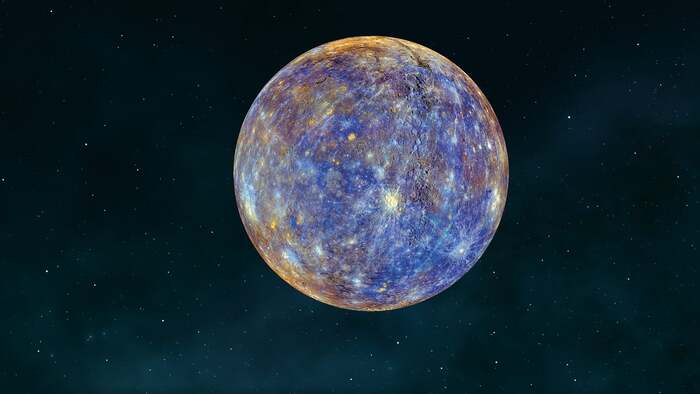In the evening you can see two "bright stars" shining in the west.
These are the two brightest planets in our solar system: Jupiter and Venus.
Update March 2, 2023:
The two "bright stars" visible in the western sky after dark are the two brightest planets in our sky: Venus and Jupiter.
During the day, Venus has "overtaken" Jupiter and is now higher in the sky than the gas planet.
Even if the two planets are now moving away from each other again in the evening sky: In the coming days they will continue to be seen as two "bright stars" close together in the west.
The UFO reporting center of the Central Research Network for Extraordinary Celestial Phenomena (CENAP) can sing a song about the fact that the celestial phenomenon of the "two bright lights" is conspicuous: "It's unbelievable what happened at our UFO reporting center last night," reports Hansjürgen Köhler.
"Inquiries and observations came in every minute via the telephone hotline and e-mail."
As Koehler reported to
fr.de
from
IPPEN.MEDIA
, the planetary show on March 1 has been reported 54 times by telephone or email (as of March 2, 9 a.m.).
There were also numerous reports in the days before.
At the UFO reporting office, one speaks of the "long night of the planets or astronomy lessons for the population".
"Bright stars" in the evening sky: the planets Venus and Jupiter meet
First report from March 1, 2023:
Munich – If you look to the west at dusk, you can currently observe a particularly impressive sky spectacle: two “bright stars” are competing and getting a little closer every day.
In fact, the two celestial objects are not "stars" but the brightest planets in our sky: Venus and Jupiter.
The two have been engaged in a kind of "race" in the evening sky for many weeks, which will be decided at the beginning of March.
On March 1st and 2nd, 2023, Venus and Jupiter will come closest, during these days Venus will overtake the gas giant Jupiter in the sky.
During this period, Jupiter and Venus are very close together, only about half a degree apart.
That's about the width of a full moon.
Jupiter and Venus shine like "bright stars" in the west
Anyone observing the two supposedly "bright stars" in the sky will see Venus below and the gas giant Jupiter above until March 1st.
From March 2nd, the two will swap positions, then Venus will be at the top, Jupiter at the bottom.
The two planets can also be easily distinguished by their brightness: Venus is the brightest planet in the night sky and shines much brighter than Jupiter.
But it is also brighter than all the stars in the sky and is only surpassed by the moon next to Venus.
The fact that Venus and Jupiter come so close in the sky has to do with the terrestrial perspective of the solar system.
In space, both planets are far apart and follow their usual orbits around the sun.
As seen from Earth, Jupiter will soon disappear behind the Sun, while Venus only emerged from behind the Sun late last year and is now moving further and further away from it.
Brightest planets dominate the evening sky
The neighboring planet of the earth therefore rises a little further up in the evening sky every day.
In the coming months Venus will be in the sky as the "evening star", its brightness increasing until it reaches its so-called "greatest brilliance" on July 7th, its maximum brightness.
Look into the depths of the universe - This is how "Hubble" sees the universe
Look into the depths of the universe - This is how "Hubble" sees the universe
As Venus rushes towards its zenith, the gas giant Jupiter slowly disappears from the evening sky during the month of March: it sets a little earlier in the west each evening and can only be seen briefly at dusk at the end of March.
Once the gas giant has left the evening sky, it remains invisible for some time and only reappears in the morning sky at the end of May.
In March you can admire the planets Jupiter and Venus as well as Mars in the starry sky.
(tab)



